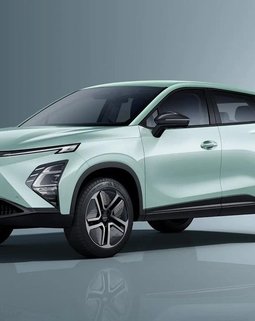Namibian authorities have implemented a ban on the driving of second-hand and left-hand drive cars on the country's roads, affecting Zimbabwean vehicle importers who use the Walvis Bay Port. This ban, enforced by the Namibia Revenue Authority (NamRA), is set to increase shipping costs for Zimbabweans and comes into effect on March 1, 2023.
Ban on Driving Second-Hand Cars
The Namibian Revenue Authority announced the ban, specifying that in-transit vehicles will only be allowed to be transported through the country on car carrier trailers. The decision aims to address issues of dubious declarations of imported vehicles as in transit, leading them to enter the local market and be registered without paying the required import taxes.
NamRA emphasized that the amendment to the Customs and Excise Rules is crucial in preventing such deviations.
Effective Date and Rationale
The ban officially takes effect on March 1, 2023, impacting the transportation of second-hand motor vehicles through Namibia. NamRA justified the decision by highlighting observed deviations where vehicles declared as in transit ended up in the local market without fulfilling tax obligations. The amendment aims to curb these practices and ensure proper tax compliance.
Impact on Zimbabwean Vehicle Importers
Zimbabweans who intend to import second-hand vehicles through the Walvis Bay Port, Namibia's largest commercial port, will face increased shipping costs due to the ban. Traditionally, these vehicles were driven over hundreds of kilometers through Namibia via Botswana.
The ban on driving second-hand cars on Namibian roads necessitates the use of car carrier trailers, adding logistical complexity and raising overall shipping expenses.
Regional Context: Similar Bans in South Africa and Botswana
Namibia's decision aligns with existing bans in South Africa and Botswana, where imported second-hand cars must be transported via vehicle carriers rather than being driven on their own wheels.
This practice is particularly relevant for vehicles imported from Asian countries through ports like Durban, impacting the overall cost of importing vehicles to Zimbabwe.
Namibia's decision aligns with existing bans in South Africa and Botswana, where imported second-hand cars must be transported via vehicle carriers rather than being driven on their own wheels. This practice is particularly relevant for vehicles imported from Asian countries through ports like Durban, impacting the overall cost of importing vehicles to Zimbabwe.
Challenges for Zimbabwean Importers
Zimbabwean importers now face challenges associated with the increased shipping costs and logistical adjustments required by the ban. The traditional practice of driving vehicles through Namibia will be replaced by the use of car carrier trailers, impacting the efficiency and cost-effectiveness of the import process.
Conclusion
As Namibia joins neighboring countries in imposing restrictions on the driving of second-hand cars, Zimbabwean importers must navigate evolving import dynamics. Adapting to the use of car carrier trailers and addressing heightened shipping costs will be essential for maintaining a viable and efficient vehicle importation process through the Walvis Bay Port.





